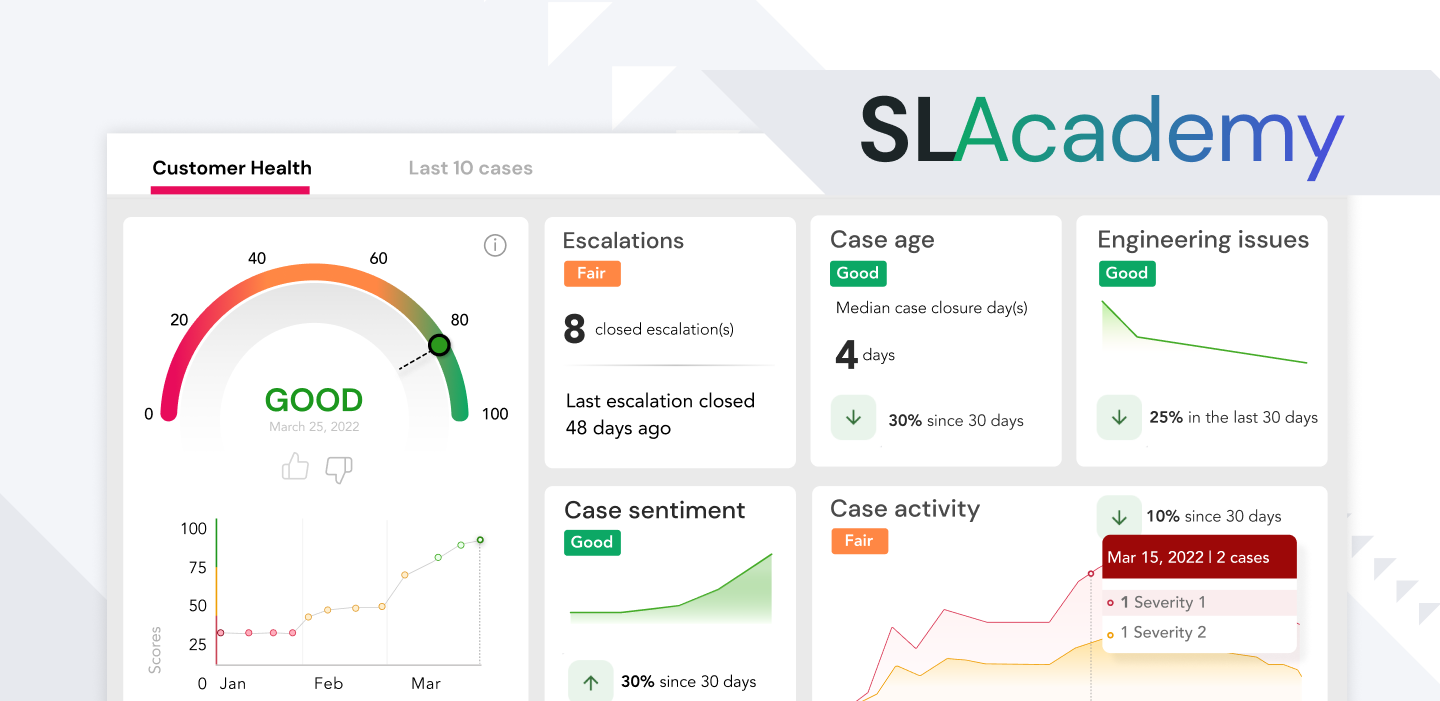
Mar 13, 2023
Customer Service Quality Assurance: What It Is & Why It’s Important
customer experienceSupport Quality Monitoring Toolsnext gen supportquality assurancequality monitoring
A customer contacts your call center for help using a recently purchased product. After the issue was successfully resolved, they received a survey asking, “On a scale of 1 to 10, how happy were you with your experience today?” They select 9, which reflects your support team’s great processes, right? Not necessarily.
The customer could have selected 9 simply because they love the product, your overall brand, or were in a good mood that day.
There are many metrics for gauging customer satisfaction, but they only tell part of the story regarding your customer support team’s performance. That’s where customer service quality assurance (QA) comes in.
In this guide, we’ll dive deeper into the world of customer service quality assurance and discuss why it’s vital for support teams and how to determine when it may be time to switch from manual to automated QA.
What is customer service QA?
It’s something most of us have heard countless times when calling a customer support line—”This call is being recorded for quality assurance purposes.” Customer service QA involves reviewing your support agents’ conversations with customers to craft a process that delivers world-class customer support.
Even though quality assurance and quality control both deal with quality standards and quality management, they are different. QA focuses more on the processes in place designed to improve quality, like training and monitoring. Quality control focuses more on the product, so developers can find and fix product defects.
Customer service quality assurance standards vary from business to business, but the overall themes typically flow in the same vein. For example, agents must follow their company’s protocols, use standardized language and tenor during interactions, and know how to solve customer issues effectively.
A QA manager or support manager conducts a customer service quality assurance review by reading or listening to support conversations. These conversations can come from any channel customers use to interact with your support team, including live chat, phone, social media, and email. Then the manager evaluates the conversations to ensure agents meet the set quality assurance standards.
After analyzing customer interactions, managers use the information to coach agents about how they can improve and acknowledge areas where each agent excels when interacting with customers.
Why is customer service quality assurance important?
By monitoring conversations with customers, you can take your support team’s performance to the next level and improve the customer experience.
QA is necessary because it’s different from other metrics and KPIs, like customer satisfaction score (CSAT) and Net Promoter Score (NPS). CSAT measures customer satisfaction with your product, service, or company. NPS measures a customer’s overall perception of your brand.
QA reviews give you a clearer picture of how customer satisfaction matches your internal standards. You can assess areas where each agent shines and where they need to improve, all while providing ongoing coaching and feedback to ensure the team represents the brand appropriately.
Only 56% of consumers indicated their support interactions in 2022 were positive. While that’s technically a majority, it’s not encouraging. Brands should strive for a much higher level of personalized service that solves customer issues and provides empathetic, relevant interactions. Quality assurance helps you target the areas of agent performance that need improvement, including other metrics like response time and handling time that factor into overall customer satisfaction.
Benefits of quality assurance for customer service
A positive customer support experience helps your business thrive, and quality assurance is critical in driving those experiences. Benefits of efficient QA include:
- Improved customer loyalty and retention. Outstanding customer service can be the difference between a return customer and churned customer —60% of consumers chose to make a purchase from a different brand based on the service they received. In addition, with improved customer satisfaction, customers are more likely to purchase another product from your brand and recommend you to a friend.
- Agents feel more empowered. A strong coaching program ensures agents have the tools they need to help customers without escalation and streamline their workflow. This independence can be a performance booster and amplify their confidence. Additionally, when agents know they’re being monitored, they feel more motivated to give interactions their all.
- Simplified onboarding process. Whether you have 10 or 100 employees, quality assurance reviews allow you to develop a standard benchmark to use as an example when onboarding new agents, keeping everyone focused and on the same page. When you have a picture of what the “perfect agent” looks like, you can create a coaching program that helps agents get close to that depiction. This also allows you to narrow your focus when standardizing your processes, interviewing candidates, and coaching them based on insights from their customer interactions.
How to set up a automated QA support process
Quality assurance monitoring doesn’t stop at onboarding new agents—it’s an ongoing process to keep your customer service team firing on all cylinders. To avoid manual QA becoming too time-consuming, implement an automation-supported quality assurance tool.
Determine your objectives
A clear target to aim for guides you on which steps to take and which measures to prioritize in your quality assurance program.
Start by auditing where you currently are and where you want to end up. This will help you prioritize specific areas in training and coaching. Your goals should align with your brand values and your customers’ expectations.
Consider assembling a quality assurance team made up of more senior support team members. Ideally, this team would have extensive experience monitoring and analyzing customer interactions and a deep familiarity with your brand values. If you have a large team, hiring a QA manager to oversee all aspects of quality assurance is a good call. A QA specialist could enhance your team’s QA rates and keep your team on track toward achieving your objectives since they’d be dedicated to reviewing the support interactions and providing more detailed, actionable analyses and reviews. Peer-to-peer reviews are another good option for quality assurance training.
Say your first contact resolution (FCR) rate is low because there are too many escalations and repeat calls. Your support agents likely need the tools and training to resolve issues on their own on the first attempt. A priority objective would be empowering agents to solve problems more independently.
Create a QA scorecard specific to your needs
Quality assurance scorecards measure customer feedback to see how your team’s interactions with customers compare to the internal goals you’ve set. It might feel overwhelming to decide what to include on your scorecard, but two rules can simplify the process for you—keep it simple and specific.
Only offer a few categories for customers to rate that are directly related to your goals. The scorecard should give you an appropriate look at your team’s performance, so make sure the questions and the rating scale reflect your goals and values.
For example, return to the scenario where your FCR rate is lower than you’d like. On your QA scorecard, you’d list a question: “Did the agent have the knowledge and training necessary to solve your issue during the first interaction?” or “Did the agent offer the correct solution to your problem?” If low FCR rates continue, you should reevaluate the tools you’re providing to agents, as well as how much training they have on said tools and how well they know the product or service. New tools or recurrent training will give agents the means to successfully resolve customer issues on the first call and without escalation.
Invest in software that will help you achieve your goals
Manual QA gets the job done, but what if the process could be simplified and produce more accurate results? QA software automatically audits every customer interaction, giving your agents the power to supercharge their support.
Automated QA tools provide at-scale real-time coaching insights and predictions for metrics like CSAT, ensuring customer satisfaction is always front and center. This enables you and your team to spend less time analyzing and more time effectively helping customers by acting on the insights.
QA software automates some of the repetitive tasks involved in quality assurance, meaning you can grade a larger volume of tickets and provide more insights to better coach and guide your agents. Automated QA also sends QA scores directly to their corresponding agents.
3 examples of quality assurance in customer service
The majority of businesses investing in quality assurance are Fortune 500 and tech companies that recognize the important role QA plays in customer satisfaction. Here are three examples of companies prioritizing QA in different ways:
Coda Payments: Leveraging AI to serve their customers
With more than 30,000 monthly support cases, Coda Payments needed a solution to help manage the workload and maintain strong quality assurance scores. The company provides secure monetization solutions for digital content publishers to earn more revenue for their online products and services, including apps and games.
Coda Payments serves 65 countries and communicates in 21 different languages, so they turned to SupportLogic’s automated QA to assist with the global audience Coda serves. SupportLogic uses AI-powered voice and speech analytics to monitor interactions and highlight key details of each case. This means Coda Payments is able to gain meaningful, real-time insights from customer interactions no matter where in the world the conversation is taking place. SupportLogic’s automated QA delivers reviews and actionable agent coaching insights, so Coda’s team is learning from each interaction and improving their processes along the way.
Peloton: Quality assurance coaching leads to personalized service
Peloton equips their support agents with the necessary tools and trusts them to solve problems independently without a set script. This enables agents to help customers without putting them on hold or escalating the issue to someone higher up, leading to a faster, less frustrating experience.
The trust Peloton places in agents isn’t done on a whim—support managers at Peloton undergo rigorous quality management and CX training to evaluate interactions between agents and customers and provide coaching. A big emphasis is placed on agents following the standard protocol and looking for opportunities to go above and beyond.
Peloton managers don’t just point out the not-so-good customer interactions—they also prioritize highlighting the good ones. By singling out some of the more unique and positive tickets, they boost morale. Recognizing team members who go above and beyond to deliver exceptional customer support doesn’t just benefit the support team and provide a learning moment to inspire other agents. It also showcases the importance of support and the customer experience to the whole company.
Zola: Making the most of QA scorecards
Zola, an online resource for all things wedding-related, uses a QA scorecard to create a framework for agents, giving them a goal to strive for when interacting with customers. This ensures they’re always working toward the same outcome.
Brand representation is key at Zola, and support agents are empowered to maintain the standards set by the quality assurance scorecard. The scorecard asks specific questions about the agent’s representation of Zola’s brand and whether they addressed the customer by name to personalize the interaction and displayed empathy.
Boost your QA process with SupportLogic
As your business grows, so should your commitment to elevating the quality of your customer service. If the manual quality assurance tasks take up too much of your day, it’s time to invest in an automated QA solution that does the heavy lifting for you.
Take a test drive and explore a demo of SupportLogic’s Auto QA today to level up your customer service quality assurance.
Don’t miss out
Want the latest B2B Support, AI and ML blogs delivered straight to your inbox?



